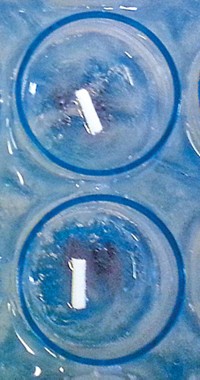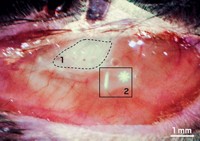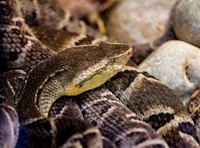Advertisement
Grab your lab coat. Let's get started
Welcome!
Welcome!
Create an account below to get 6 C&EN articles per month, receive newsletters and more - all free.
It seems this is your first time logging in online. Please enter the following information to continue.
As an ACS member you automatically get access to this site. All we need is few more details to create your reading experience.
Not you? Sign in with a different account.
Not you? Sign in with a different account.
ERROR 1
ERROR 1
ERROR 2
ERROR 2
ERROR 2
ERROR 2
ERROR 2
Password and Confirm password must match.
If you have an ACS member number, please enter it here so we can link this account to your membership. (optional)
ERROR 2
ACS values your privacy. By submitting your information, you are gaining access to C&EN and subscribing to our weekly newsletter. We use the information you provide to make your reading experience better, and we will never sell your data to third party members.
Nanomaterials
Spray-On Polymer Mats Seal Surgical Incisions
Biomaterials: Researchers apply mats of biodegradable nanofibers directly onto tissues using a commercial airbrush
by Katherine Bourzac
March 21, 2014
| A version of this story appeared in
Volume 92, Issue 12

To supplement or even replace sutures, researchers have proposed applying sticky, biodegradable mats of polymer nanofibers onto surgical incisions to seal them and promote healing. But existing methods of depositing such mats aren’t compatible with living cells and tissues. Now, researchers have demonstrated that they can spray polymer nanofibers directly onto biological tissues using an airbrush from a hardware store (ACS Macro Lett. 2014, DOI: 10.1021/mz500049x).
Mats of polymer nanofibers show potential not only for surgery but also as biodegradable, drug-releasing implants or as scaffolds for tissue engineering, says Peter Kofinas, a bioengineer at the University of Maryland, College Park. Current methods for making the mats—such as electrospinning, which involves electric current—would damage living cells if the mats were made in situ. To devise a way to create the mats directly on the tissue, Kofinas and colleagues adapted a commercial airbrush, a tool more commonly used to apply paint.
They tinkered with different formulations of a biodegradable polymer, poly(lactic-co-glycolic acid), or PLGA, to find one that would work in the airbrush. By choosing a particular molecular weight of PLGA and concentration of acetone as the solvent, they could control the diameter of the resulting fibers. They ended up producing mats with fiber diameters of about 370 nm.
The researchers showed that the mats could seal diaphragm hernias and cuts to the lung, intestine, and liver in a pig. The acetone appears to evaporate before the nanofibers get deposited, suggesting that the solvent won’t pose toxicity problems, according to the paper. Cells sprayed with the PLGA nanofibers show no change in health after 24 hours. In lab tests, the nanofiber mats degraded completely over a 42-day period.
“Using an airbrush to deposit biomaterials directly onto tissue is quite enticing and has potential in many areas of medicine,” says Jeffrey M. Karp, a bioengineer and codirector of the Center for Regenerative Therapeutics at Brigham & Women’s Hospital, in Boston. Kofinas’s group is currently doing safety studies and improving the materials for surgical trials in laboratory animals.





Join the conversation
Contact the reporter
Submit a Letter to the Editor for publication
Engage with us on Twitter